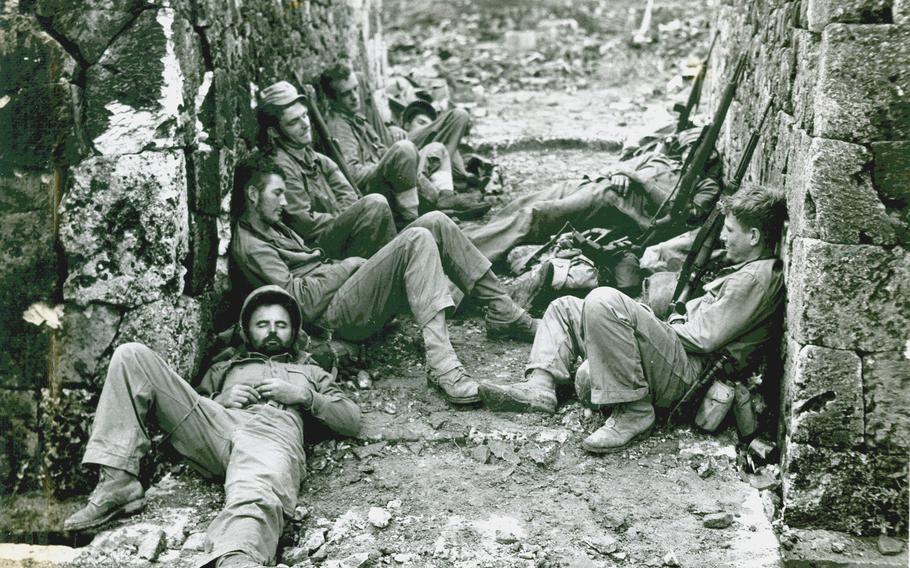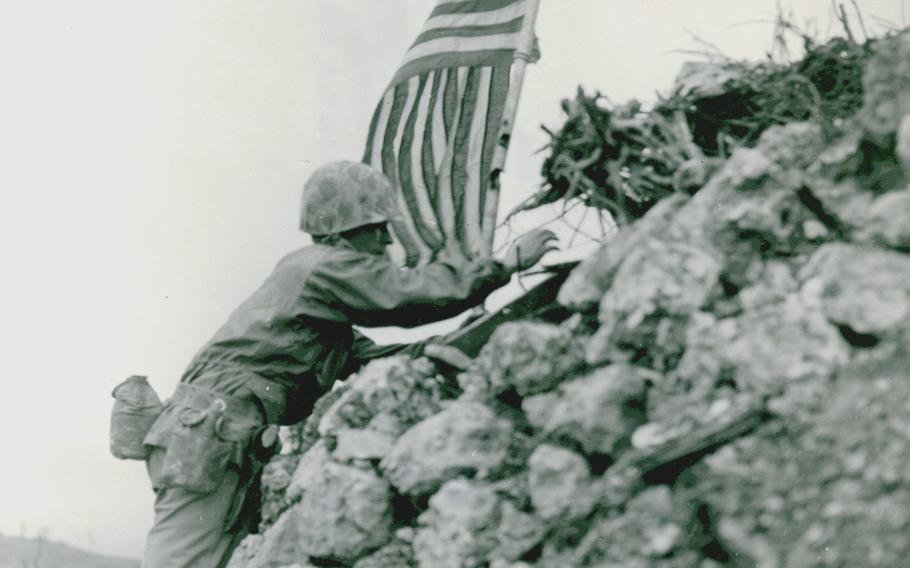Marine Corps
Marine recordings open window on Battle of Okinawa
Stars and Stripes August 7, 2023

Marines of a Sixth Division mortar crew snatch 40 winks after a hard night of fighting for the capital city of Naha. (Marine Corps Archives & Special )
CAMP FOSTER, Okinawa — Sometime during the Battle of Okinawa in 1945, Marine Sgt. Alvin Josephy Jr. recorded a running commentary during deafening, close-quarter Marine combat with Japanese defenders.
The Japanese were ensconced behind an embankment. “There’s a concrete abutment of some sort, and they’re set up behind it in a pretty nice manner,” Josephy’s voice says calmly. He turns his attention to Marines rushing forward to fire bazookas at the structure.
“There they go,” he said. “They’re going to blast them out of there, concrete and all.”
Josephy’s audio recording in the Marine Combat Recordings collection, hundreds of hours of audio transferred first to disc and later to magnetic tape, was discovered in the spring by Japanese public broadcaster NHK at the Audio-Visual Conservation Center of the Library of Congress in Culpeper, Va., library spokeswoman Leah Knobel said by phone June 30.
The recordings were made on Armour wire and filmstrip, both portable audio recorders available at the time, during 14 different Pacific campaigns, Knobel said.

Marine Lt. Col. R.P. Ross Jr., of Frederick, Md., plants the American flag on one of the remaining ramparts of ancient Shuri castle on Okinawa. (Marine Corps Archives & Special )
An NHK documentary produced from more than 30 hours of Okinawa recordings and broadcast in June has been viewed more than 143,000 times since June 30. The documentary can be viewed on YouTube in Japanese.
The Marine recording project began in late 1943 at the behest of Harold Spivacke, then chief of the library’s music division, and Brig. Gen. Robert Denig, wartime director of Marine Corps public information, according to a history written by Marine Staff Sgt. Robert Bloch in 1953.
Advances in sound recording prompted the men to request Marines to carry cumbersome devices to capture music on remote Pacific islands. The Marines quickly switched to record the sounds of combat, Bloch wrote.
The recordings include interviews with troops on the eve of battle, briefings, personal messages for loved ones back home and after-action reports, Matthew Barton, the library’s curator of recorded sound, said by phone June 30.
They also include moments of levity, like when a chicken lands in a Marine trench during the battle, and the post-war occupation of Japan in 1945.
“These are unique,” Barton said. “It isn’t somebody summarizing what happened yesterday; it’s somebody talking about what’s happening right now, and you’re right there with it.”